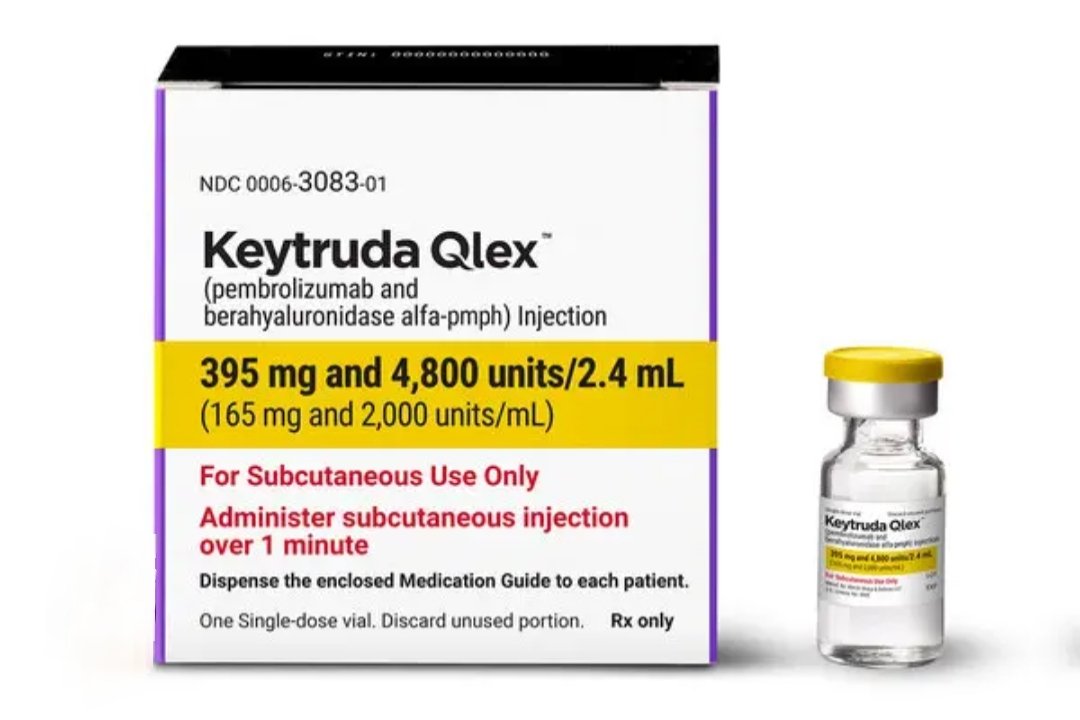In a move that’s set to make cancer treatment feel a little less like a marathon and more like a sprint, the U.S. Food and Drug Administration gave the green light yesterday to a new under-the-skin version of one of the world’s most trusted cancer fighters. Merck & Co., the powerhouse behind it all, announced that Keytruda Qlex—a subcutaneous shot of the immunotherapy drug pembrolizumab—can now hit the market for adults battling a wide array of solid tumors. For patients who’ve spent countless hours tethered to IV drips, this could mean reclaiming precious time and a slice of normalcy in the fight of their lives.
Pembrolizumab, sold under the brand name Keytruda, has been a beacon of hope since it burst onto the scene back in 2014. It’s a type of immunotherapy that works by unleashing the body’s own immune cells to hunt down and destroy cancer cells, particularly those sneaky ones expressing a protein called PD-L1. Over the years, it’s racked up approvals for everything from melanoma and lung cancer to harder-to-treat beasts like triple-negative breast cancer and endometrial carcinoma. In fact, it’s cleared for 38 different uses in adults, covering everything from adjuvant therapy after surgery for melanoma to frontline combos for metastatic non-small cell lung cancer (NSCLC). And now, with this nod extending to kids 12 and up, it’s reaching even further.
What makes Keytruda Qlex such a big deal? It’s all about ditching the needle-in-the-arm hassle. The old intravenous version requires a 30-minute infusion every three or six weeks—time that adds up, especially when you’re juggling doctor’s visits, work, and just trying to feel human again. This new formulation? A quick jab under the skin that wraps up in as little as one minute for the three-week dose or two minutes for the six-week one. No more waiting rooms that feel like eternity; think doctor’s office, community clinic, or even a quicker stop at an infusion center.
The science backing this isn’t some leap of faith—it’s rock-solid, drawn from a Phase 3 trial called Study 3475A-D77 that zeroed in on folks with newly diagnosed metastatic NSCLC, a lung cancer that hits hard and fast. Researchers pitted the subcutaneous shot against the standard IV drip, both paired with chemo, in 377 patients without certain genetic mutations like EGFR or ALK. The results? The shots delivered the same punch: blood levels of the drug were comparable, with exposure metrics hitting the mark for equivalence (geometric mean ratios well above the 0.8 threshold regulators demand). Tumor response rates were neck-and-neck too—45% for the quick-shot group versus 42% for IV—meaning about the same number of patients saw their cancers shrink or stabilize. Progression-free survival and overall survival showed no meaningful gaps either, proving this isn’t a watered-down version; it’s the real deal, just faster to deliver.
Safety-wise, it’s familiar territory for anyone who’s been on Keytruda before. Like its IV sibling, it can stir up immune-related side effects—think inflammation in the lungs, gut, or thyroid—that need watching. But the trial didn’t flag any new red flags with the subcutaneous route, and common gripes like nausea or fatigue cropped up at similar rates. The one big caveat: it’s got an added ingredient, berahyaluronidase alfa, an enzyme that helps the drug slip through skin tissues like butter. Folks allergic to hyaluronidase or its kin should steer clear.
So, how does this play out in the real world? If you’re a patient or caregiver eyeing this option, here’s the straightforward scoop—straight from the prescribing playbook. Only a healthcare pro administers it, so no DIY at home. They’ll pick the thigh or abdomen as the spot, steering clear of that five-centimeter zone around your belly button to keep things smooth. For the every-three-weeks schedule, it’s 395 mg of pembrolizumab mixed with 4,800 units of the enzyme, injected over one minute. Opt for every six weeks? Double it to 790 mg and 9,600 units over two minutes. Treatment rolls on until the cancer progresses, side effects say stop, or your doc calls it. Ladies of childbearing age: Chat about pregnancy tests and birth control, as this drug isn’t friend to a developing fetus. And nursing? Pump the brakes for four months after your last dose.
Picture this: Sarah, a 52-year-old teacher from Ohio who’s been battling NSCLC for two years. Her IV sessions meant half-hour hookups that left her drained before the day even started. Now, with Keytruda Qlex, she could be in and out in minutes, back to lesson plans or family dinners without the weight of another long haul. It’s stories like these that hit home—these aren’t just approvals; they’re lifelines that let people breathe easier, literally and figuratively.
Of course, not every patient’s a candidate; your oncologist will weigh if this fits your tumor type and health profile. But for the millions facing solid tumors, this tweak to a blockbuster drug (Keytruda’s already a sales juggernaut, topping $25 billion last year) signals a shift toward care that’s kinder on the clock and the soul.
This report draws from Merck’s official announcement and the FDA’s approval summary, both released September 19, 2025.

